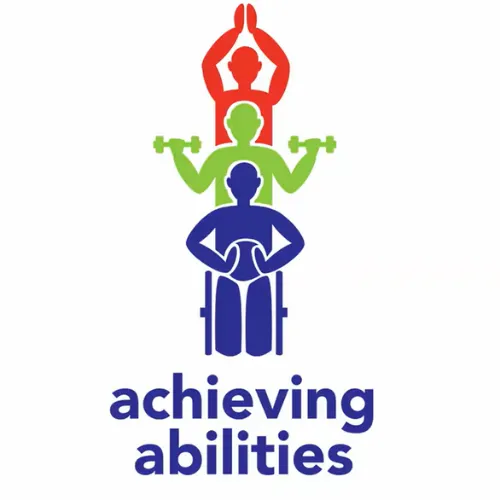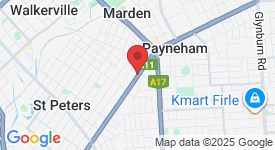Lauren McDougallJun 29, 20183 min read
Yoga for special needs & chronic health
Updated: Mar 25, 2022
The use of yoga in younger populations, with and without, disability or chronic health conditions is growing, and so is the evidence.
Yoga has been shown to benefit individuals with Autism Spectrum Disorders, ADHD, Anxiety, Asthma, physical disabilities, intellectual disabilities, recovering from illness and individuals with motor planning difficulties - just to name a few.
“But, why is it so good?”
Firstly, yoga is a fairly safe and non-competitive activity. This makes it well suited for individuals with a disability, chronic health condition, or any young person who may just have had a number of unsuccessful experiences with physical activity.
A number of the body positions in yoga encourage sensory integration, body awareness, coordination and balance – which can be common areas of difficulty.
It's also low impact, which means not only is it safe, it can be good for those recovering from illness, those needing something a little less strenuous, or those building up their exercise tolerance.
“So what else?”
The vestibular system helps us with balance and spatial orientation for coordinating movement, while our proprioceptive system relates to our internal awareness of our body’s position. The combination gives us vital information about movement and spatial awareness, but in a number of individuals these systems can be a little.. ‘dysfunctional’ shall we say.
Here’s how yoga might help:
• Yoga may improve proprioception through the use of verbal (or visual) cues, to help the individual associate with their body.
• A number of yoga poses may challenge balance, improving the function of the vestibular system.
• Majority of the poses in yoga use the individual’s body weight to provide input to the joints and muscles, thereby improving muscle tone and providing sensory input. This also helps improve proprioception and body awareness.
“Go on...”
The breathing exercises common with yoga can help to stimulate the parasympathetic nervous system (the calming system). For a number of children and young people, emotional, and self-regulation, can be quite challenging. For example, for individuals who may experience sensory sensitivities, communication difficulties, motor planning and coordination challenges, or concentration difficulties, (as examples), anxiety or frustration can often arise.
“Wait, there’s still more?”
There is a strong body of evidence for the benefits of yoga on overall wellbeing in younger populations, such as:
• Improving motor control and motor planning skills
• Developing physical strength, muscle tone and balance
• Promote flexibility and correct postural misalignment
• Increase self-awareness
• Establish calm, organised mental states
• Improve concentration, attention span and mental clarity
• Reduce hyperactivity
• Relieve respiratory ailments and improve breathing coordination
• Develop the ability to relax and release tension
• Reduce fear, frustration and stress
• Enrich the quality and quantity of sleep
• Dissipates excess energy and relieves lethargy
•Benefits children with psychomotor deficits.
• Improved ability to follow motor patterns
Achieving Abilities have completed a children and teen yoga teaching course and are able to integrate yoga, or components of yoga, into exercise sessions. Through combination of the skills learnt in the course, and our clinical knowledge of disability, chronic conditions and/or motor challenges, we are able to merge the two domains together.
As an example of how we integrate it, we may select particular postures to help develop strength, balance, coordination, posture and body awareness etc, or we may focus on breathing for individuals with, and without, difficulties with emotional/self-regulation at the start or end of a session. We use aspects of yoga to meet an individuals needs, the same way we prescribe any exercise.
Check out the video below as one little boy with Special Needs in the UK reflects on his experience of yoga, and how it’s improved his confidence.
Full video - https://www.youtube.com/watch?v=Crzqs9yZhUg
• Chissick, M 2012, “Play with Posture.(Yoga for Special Needs Students to Maintain Their Health).” Times Educational Supplement, no. 4985, p. 46-51
• Cooper, C 2010, "A calming influence: a yoga centre helping children with special needs has been achieving some impressively positive results." Nursing Standard, vol. 24, no. 50, p. 24-32
• Garcia, J “Autism Spectrum Disorder and Using Yoga as an Intervention: A Critical Review of the Literature”, clinical dissertation submitted for PhD, retrieved from Pro-Quest
• Hardy, S 2015, ‘Asanas for Autism and Special Needs’, Jessica Kingsley Publishing, London
• Kenny, M 2002, ‘Integrated movement therapy: Yoga-based therapy as a viable and effective intervention for autism spectrum and related disorders, International Journal of Yoga, vol. 12, no.1, pp.71-79
•Special Yoga, 2018, Benefits of Special Yoga, viewed 25th June 2018,
<https://specialyoga.org.uk/about-us/benefits-special-yoga/ >

📞 0431 048 684
✉️ [email protected]
📍 307 Payneham Road, Royston Park SA 5070
Golden Grove - Payneham - Marden - Ridgehaven

